-
We are currently performing site maintenance, parts of civfanatics are currently offline, but will come back online in the coming days (this includes any time you see the message "account suspended"). For more updates please see here.
You are using an out of date browser. It may not display this or other websites correctly.
You should upgrade or use an alternative browser.
You should upgrade or use an alternative browser.
Political Cartoons
- Thread starter Colonel
- Start date
- Status
- Not open for further replies.
Rambuchan
The Funky President
Rambuchan
The Funky President
Here are some guidelines from Banksy's site on how to do your own stencil art:



Lady With A Mask


Solider With A Spray Can


This is a "Withus Oragainstus" (Dead bettle with glued on sidewinder missiles and satellite) - This was hung in the British Museum.


Think from outside the box.
Collapse the box and take a fuc*ing sharp knife to it.
Leave the house before you find something worth staying in for.
Spray the paint sparingly onto the stencil from a distance of 8 inches.
Be aware that going on a major mission totally drunk out of your head will result in some truly spectacular artwork and at least one night in the cells.
When explaining yourself to the Police its worth being as reasonable as possible. Graffiti writers are not real villains. I am always reminded of this by real villains who consider the idea of breaking in someplace, not stealing anything and then leaving behind a painting of your name in four foot high letters the most ******** thing they ever heard of.
Remember crime against property is not real crime. People look at an oil painting and admire the use of brushstrokes to convey meaning. People look at a graffiti painting and admire the use of a drainpipe to gain access.
The time of getting fame for your name on its own is over. Artwork that is only about wanting to be famous will never make you famous. Any fame is a by-product of making something that means something. You don't go to a restaurant and order a meal because you want to have a shi*.



Lady With A Mask


Solider With A Spray Can


This is a "Withus Oragainstus" (Dead bettle with glued on sidewinder missiles and satellite) - This was hung in the British Museum.


Rambuchan
The Funky President
Rambuchan
The Funky President
Rambuchan
The Funky President
And now I'd like to introduce to you....
THOMAS NAST
"The Youngest Introducing the Oldest." (July 18, 1868).
(Columbia introduces John Chinaman to The Western Powers)

"Pacific Chivalry." (August 7, 1869).
(California ruffian whips John Chinaman)

"The Comet of Chinese Labor." (June 13,1870).
(Arrival of strike-busting Chinese to East Coast, North Adams, Massachussetts Model Shoe Factory strike)

"The Chinese Question." (February 18, 1871).
(Columbia defends disconsolae John Chinaman from nativist Attacks)

"'Every Dog' (No distinction of Color) 'Has His Day'." (February 8, 1879).
(Bedraggled Native American to Chinese immigrant)

"A Matter of Taste." (c. 1883).
(John Chinaman refuses Soup in Kearney's Senatorial Resturant--refers to legislation pertaining to Chinese Exclusion Act)

Armed White Man's Leaguer and Ku Klux Klan Member Shake Hands a cowed African American Family. (October 1874).

"The Modern Samson." (1868).
(Southern Democracy as Delilah Shears the Hair of Suffrage off a Black Samson)

2 Panels.
"The Odor of the Nig*er (Republican) is Offensive,"
(White Southern Democrat holds nose as well turned out freedmen go to vote),
"But . . ."
(sycophantic Democrats at a fancy dress ball court black participants). (September 26 1868).

"Halt!' "This is not the way to repress corruption and initiate the Negroes into the ways of honest and orderly Government!" (1871?).
(A sword wielding Columbia drives back thugs from the White Man's League)

THOMAS NAST
That was an extract from his wesbite (link here)"The World of Thomas Nast ~ Morton Keller"
For almost a century and a half now, Thomas Nasts cartoons have had an important place in the American consciousness.
Every schoolchild knows that he made the elephant and the donkey potent symbols in the ongoing clash over office between Republicans and Democrats...
and made Santa Claus an equally potent symbol in the ongoing clash over presents between children and parents.
Nasts Tweed Ring series is arguably the most powerful and influential work ever done by an American political cartoonist. And there isor there should berecognition of the power of his response to the issues of race and equality during the period of the Civil War and Reconstruction.
The defining events of modern Americatwo world wars, the Great Depression, the civil rights movementevoked no equivalent response among this countrys political cartoonists; though a case can be made that Herblocks assaults on Joseph McCarthy and Richard Nixon were in Nasts league. To find counterparts abroad, we must look to Honoré Daumiers treatment of Louis Philippe and his July Monarchy in France in the 1830s and the 1840s, or to British cartoonist David Lows response in the Manchester Guardian during the 1930s and 1940s on the approach and unfolding of the Second World War.
As Daumier once observed, One must be of ones time.
"The Youngest Introducing the Oldest." (July 18, 1868).
(Columbia introduces John Chinaman to The Western Powers)

"Pacific Chivalry." (August 7, 1869).
(California ruffian whips John Chinaman)

"The Comet of Chinese Labor." (June 13,1870).
(Arrival of strike-busting Chinese to East Coast, North Adams, Massachussetts Model Shoe Factory strike)

"The Chinese Question." (February 18, 1871).
(Columbia defends disconsolae John Chinaman from nativist Attacks)

"'Every Dog' (No distinction of Color) 'Has His Day'." (February 8, 1879).
(Bedraggled Native American to Chinese immigrant)

"A Matter of Taste." (c. 1883).
(John Chinaman refuses Soup in Kearney's Senatorial Resturant--refers to legislation pertaining to Chinese Exclusion Act)

Armed White Man's Leaguer and Ku Klux Klan Member Shake Hands a cowed African American Family. (October 1874).

"The Modern Samson." (1868).
(Southern Democracy as Delilah Shears the Hair of Suffrage off a Black Samson)

2 Panels.
"The Odor of the Nig*er (Republican) is Offensive,"
(White Southern Democrat holds nose as well turned out freedmen go to vote),
"But . . ."
(sycophantic Democrats at a fancy dress ball court black participants). (September 26 1868).

"Halt!' "This is not the way to repress corruption and initiate the Negroes into the ways of honest and orderly Government!" (1871?).
(A sword wielding Columbia drives back thugs from the White Man's League)

ybbor
Will not change his avata
Rambuchan
The Funky President
THOMAS NAST ON ANDREW JOHNSON
Starting just before the election of 1866..... I have underlined some highlights in the accompanying text. They point out some interesting elements of the pictures which are easy to miss otherwise. Hope they help. Oh and once again, it is quite amazing how pertinent many messages are for us still today. Have a look at the Prometheus cartoon towards the bottom, for example.
King Andy

This cartoon in the issue of November 3, 1866, appeared about two weeks before Election Day. It shows Johnson as King with Secretary of State William H. Seward as his grand vizier pointing to the line for the chopping block. At the left is Secretary of the Navy Gideon Welles as Neptune; "290" on his chest is the original number for the Alabama, the British-built warship that the Confederates under Raphael Semmes used to sink Union merchant ships during the war. At the right, Miss Liberty sits in chains. Seward is shown below because he made a speech in St. Louis after Johnson spoke in which he referred to a king-minister relationship as an analogy for Johnson and himself.
Those for the chopping block: The man with his head on the chopping block is Thaddeus Stevens, Johnsons principal adversary in the House. Behind Stevens are abolitionist Wendell Phillips, publisher John W. Forney, Senator Charles Sumner (Johnsons principal adversary in the Senate), Congressman (and General) Benjamin Butler, orator Anna Elizabeth Dickinson, publisher Horace Greeley, Congressman John Logan and, at the very rear, Thomas Nast himself with a sketchbook under his arm.
The upside down duck on Johnsons medallion is significant. John Forney, whose Philadelphia and Washington newspapers irritated Johnson, had called Forney a "Dead Duck." Nast used the "Order of Dead Ducks" to lampoon Johnson on several occasions.
----------------
Johnson Kicking Freedmen's Bureau

On April 14, 1866, Thomas Nast drew a cartoon of "The Grand Masquerade Ball" featuring large sketches of many of the celebrities of the day. Andrew Johnson is pictured kicking out the Freedmens Bureau with his veto, with scattered black people coming out of it.
----------------
Andy's Trip

From August 27 to September 15, 1866, President Johnson made his "Swing Around the Circle" tour to Chicago, St. Louis and other cities, to drum up election support for Democratic candidates. Thomas Nast drew "Andys Trip" which was published in the October 27 issue. It featured about 20 vignettes, as well as a detailed recital of Johnsons earlier speeches. That text is reprinted here after the cartoon itself.
One of the vignettes (bottom right) shows Johnson handing a pardon to Mayor John Monroe of New Orleans, while stating: "Hang Jeff Davis" "Then I would ask you why not hang (Congressman) Thad Stevens and (abolitionist) Wendell Phillips?" Stevens and Phillips are shown hanging in the background.
----------------
The Big Thing

On March 30, 1867, the Treaty to buy Alaska from Russia for $7 million was signed. Thomas Nast showed Secretary of State William H. Seward, who was responsible for negotiating the treaty, rubbing some Russian salve on President Johnsons sore spot on his head as Johnson looks in the mirror and sees himself as "King Andy." Johnson is shown as upset and off-balance, primarily from the passage of the Military Reconstruction Act and a new law allowing Negroes to vote in Georgetown. At the time, the purchase of Alaska was considered to be "Sewards folly" by many Americans.
----------------
Prometheus Bound

Nast depicted General Grant as Prometheus, held captive by Johnsons policies and a Supreme Court decision ("ex parte Milligan") which called into question the authority of military trials for civilians when civil courts were open. Grant is tormented by the hungry eagle of the unseen Zeus (Johnson) and the demonic furies of the Confederate States. At the middle left, the spectral goddess Congress urges her sister Columbia to aid Grant, and the spirits of the Union states on the right rise to do just that. The dialog ends on a positive note: "And See! More Come!"
Indeed, the Military Reconstruction Act and the Tenure of Office Act were passed on March 2, the same date as this issue which went to press two weeks earlier. Nast also recited some of the military crimes and insults which occasioned the cartoon.
The Political Death of the Bogus Caesar

Thomas Nast drew this cartoon in May 1868, but not for Harpers Weekly, for which he had not worked in more than a year. It was intended for the short-lived Illustrated Chicago News (April-June 1868), a would-be rival to Harpers Weekly.
The cartoon is a close parody of a painting by J. L. Gérôme called "The Death of Caesar." Nast obviously thought Johnson would be impeached, so he showed him lying dead on the floor with his chair upside down and his vetoes at his side. In the right front, a scroll has "Tenure of Office" written on it. Johnsons own words "Treason is a crime and must be punished" are thrown back at him in the sign over his head.
The Republican gladiators with their swords upraised constituted the managers who conducted the impeachment. They are (from the left) George Boutwell (Mass.), John Logan (IL.), John Bingham (Ohio), James Wilson (Iowa), Benjamin Butler (Mass.), and Thomas Williams (PA). Thaddeus Stevens (PA) is shown exiting the scene on the far right. Stevens died in August 1868; it is obvious that this cartoon was drawn well before his death.
However, Harpers Weekly waited for the end of Johnsons term before publishing it in the issue of March 13, 1869, along with a contemptuous editorial. By then Nast was back as a regular contributor and brought this cartoon with him.
The Whirligig of Time

In 1875, Andrew Johnson again became a Senator. Thomas Nast pictured himself greeting Johnson at the door to the Senate. However, Johnson died about five months later, on July 31, 1875.
Starting just before the election of 1866..... I have underlined some highlights in the accompanying text. They point out some interesting elements of the pictures which are easy to miss otherwise. Hope they help. Oh and once again, it is quite amazing how pertinent many messages are for us still today. Have a look at the Prometheus cartoon towards the bottom, for example.
King Andy

This cartoon in the issue of November 3, 1866, appeared about two weeks before Election Day. It shows Johnson as King with Secretary of State William H. Seward as his grand vizier pointing to the line for the chopping block. At the left is Secretary of the Navy Gideon Welles as Neptune; "290" on his chest is the original number for the Alabama, the British-built warship that the Confederates under Raphael Semmes used to sink Union merchant ships during the war. At the right, Miss Liberty sits in chains. Seward is shown below because he made a speech in St. Louis after Johnson spoke in which he referred to a king-minister relationship as an analogy for Johnson and himself.
Those for the chopping block: The man with his head on the chopping block is Thaddeus Stevens, Johnsons principal adversary in the House. Behind Stevens are abolitionist Wendell Phillips, publisher John W. Forney, Senator Charles Sumner (Johnsons principal adversary in the Senate), Congressman (and General) Benjamin Butler, orator Anna Elizabeth Dickinson, publisher Horace Greeley, Congressman John Logan and, at the very rear, Thomas Nast himself with a sketchbook under his arm.
The upside down duck on Johnsons medallion is significant. John Forney, whose Philadelphia and Washington newspapers irritated Johnson, had called Forney a "Dead Duck." Nast used the "Order of Dead Ducks" to lampoon Johnson on several occasions.
----------------
Johnson Kicking Freedmen's Bureau

On April 14, 1866, Thomas Nast drew a cartoon of "The Grand Masquerade Ball" featuring large sketches of many of the celebrities of the day. Andrew Johnson is pictured kicking out the Freedmens Bureau with his veto, with scattered black people coming out of it.
----------------
Andy's Trip

From August 27 to September 15, 1866, President Johnson made his "Swing Around the Circle" tour to Chicago, St. Louis and other cities, to drum up election support for Democratic candidates. Thomas Nast drew "Andys Trip" which was published in the October 27 issue. It featured about 20 vignettes, as well as a detailed recital of Johnsons earlier speeches. That text is reprinted here after the cartoon itself.
One of the vignettes (bottom right) shows Johnson handing a pardon to Mayor John Monroe of New Orleans, while stating: "Hang Jeff Davis" "Then I would ask you why not hang (Congressman) Thad Stevens and (abolitionist) Wendell Phillips?" Stevens and Phillips are shown hanging in the background.
----------------
The Big Thing

On March 30, 1867, the Treaty to buy Alaska from Russia for $7 million was signed. Thomas Nast showed Secretary of State William H. Seward, who was responsible for negotiating the treaty, rubbing some Russian salve on President Johnsons sore spot on his head as Johnson looks in the mirror and sees himself as "King Andy." Johnson is shown as upset and off-balance, primarily from the passage of the Military Reconstruction Act and a new law allowing Negroes to vote in Georgetown. At the time, the purchase of Alaska was considered to be "Sewards folly" by many Americans.
----------------
Prometheus Bound

Nast depicted General Grant as Prometheus, held captive by Johnsons policies and a Supreme Court decision ("ex parte Milligan") which called into question the authority of military trials for civilians when civil courts were open. Grant is tormented by the hungry eagle of the unseen Zeus (Johnson) and the demonic furies of the Confederate States. At the middle left, the spectral goddess Congress urges her sister Columbia to aid Grant, and the spirits of the Union states on the right rise to do just that. The dialog ends on a positive note: "And See! More Come!"
Indeed, the Military Reconstruction Act and the Tenure of Office Act were passed on March 2, the same date as this issue which went to press two weeks earlier. Nast also recited some of the military crimes and insults which occasioned the cartoon.
The Political Death of the Bogus Caesar

Thomas Nast drew this cartoon in May 1868, but not for Harpers Weekly, for which he had not worked in more than a year. It was intended for the short-lived Illustrated Chicago News (April-June 1868), a would-be rival to Harpers Weekly.
The cartoon is a close parody of a painting by J. L. Gérôme called "The Death of Caesar." Nast obviously thought Johnson would be impeached, so he showed him lying dead on the floor with his chair upside down and his vetoes at his side. In the right front, a scroll has "Tenure of Office" written on it. Johnsons own words "Treason is a crime and must be punished" are thrown back at him in the sign over his head.
The Republican gladiators with their swords upraised constituted the managers who conducted the impeachment. They are (from the left) George Boutwell (Mass.), John Logan (IL.), John Bingham (Ohio), James Wilson (Iowa), Benjamin Butler (Mass.), and Thomas Williams (PA). Thaddeus Stevens (PA) is shown exiting the scene on the far right. Stevens died in August 1868; it is obvious that this cartoon was drawn well before his death.
However, Harpers Weekly waited for the end of Johnsons term before publishing it in the issue of March 13, 1869, along with a contemptuous editorial. By then Nast was back as a regular contributor and brought this cartoon with him.
The Whirligig of Time

In 1875, Andrew Johnson again became a Senator. Thomas Nast pictured himself greeting Johnson at the door to the Senate. However, Johnson died about five months later, on July 31, 1875.
Rambuchan
The Funky President
Rambuchan
The Funky President
Rambuchan
The Funky President
Rambuchan
The Funky President
Rambuchan
The Funky President
Rambuchan
The Funky President
Rambuchan said:
i like this 1, so true and so sad... return of the aristocracy ??
Rambuchan
The Funky President
Yes my friend. Goes well with the Feudalism cartoon I thought.Ramius75 said:i like this 1, so true and so sad... return of the aristocracy ??

Richard Cribb
He does monologues
- Joined
- Nov 5, 2003
- Messages
- 4,291
@Ram:Thanks a lot for great cartoons and a history lesson as well 
I am about to leave for a couple of weeks, but first I want to offer my take on the Killer, coward, conman, my candidate for the worst US president ever, Ronald Reagan.
Unfortunately I wasn't able to find a lot of material, and I have already posted some of the best in previous post, but nevertheless; here we go:

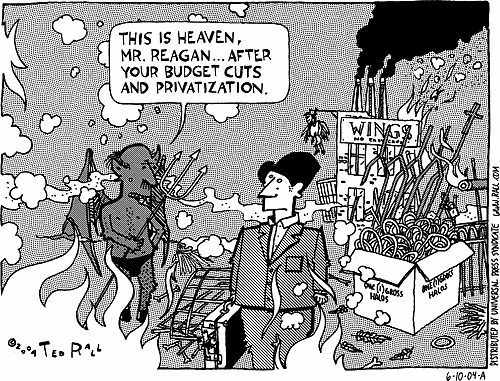
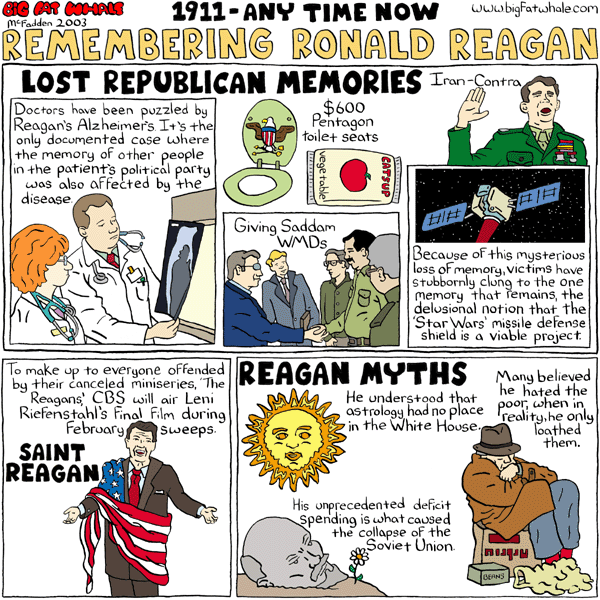
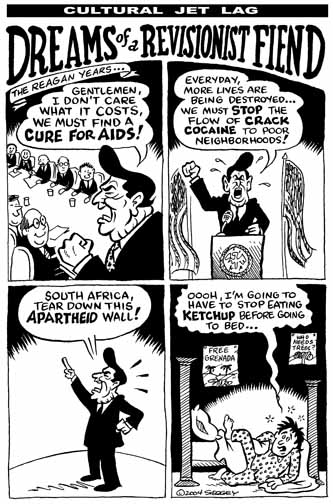
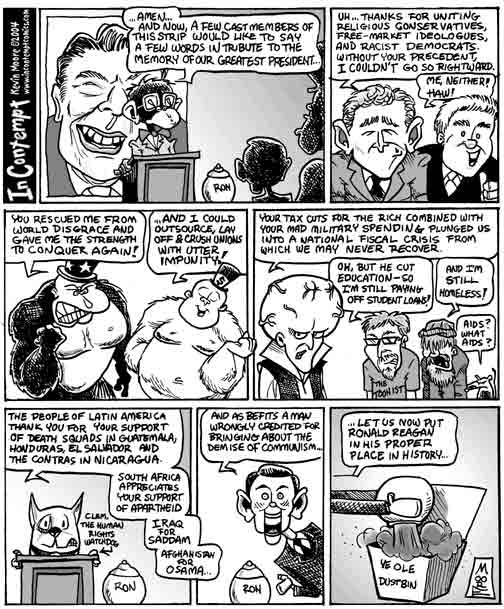
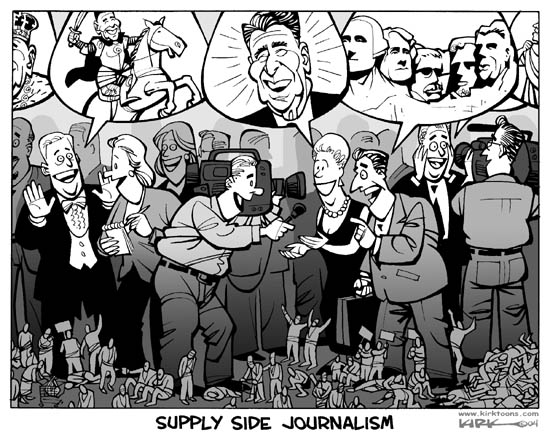
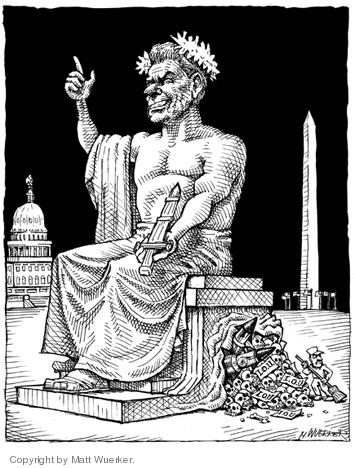

I am about to leave for a couple of weeks, but first I want to offer my take on the Killer, coward, conman, my candidate for the worst US president ever, Ronald Reagan.
Unfortunately I wasn't able to find a lot of material, and I have already posted some of the best in previous post, but nevertheless; here we go:







PrinceOfLeigh
Wigan, England
Excellent posting on this thread, the only one I don't understand it the Tomato Soup picture which looks to me like a picture of Tomato Soup. Can anyone enlighten me as to the underlying message as it is too underlying for me to see!
Jawz II
Oh Dear
- Status
- Not open for further replies.
Similar threads
- Replies
- 131
- Views
- 24K
- Replies
- 7
- Views
- 2K
- Replies
- 96
- Views
- 18K





























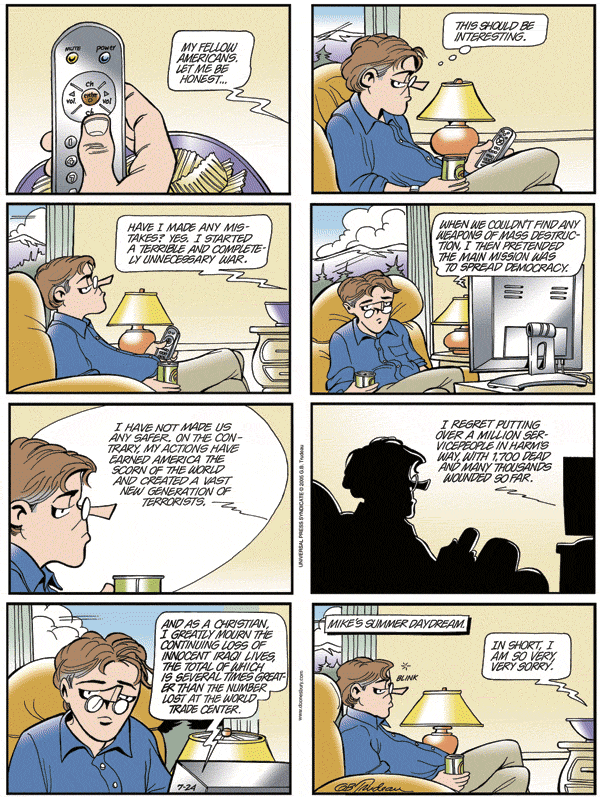























 .
.




